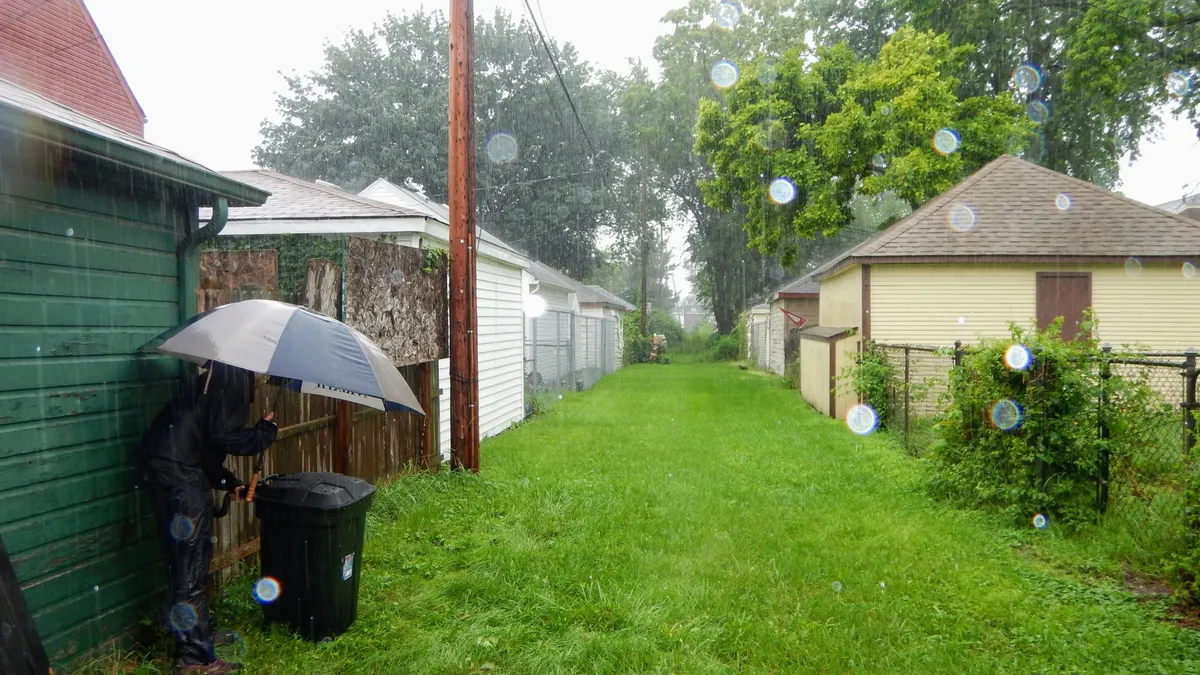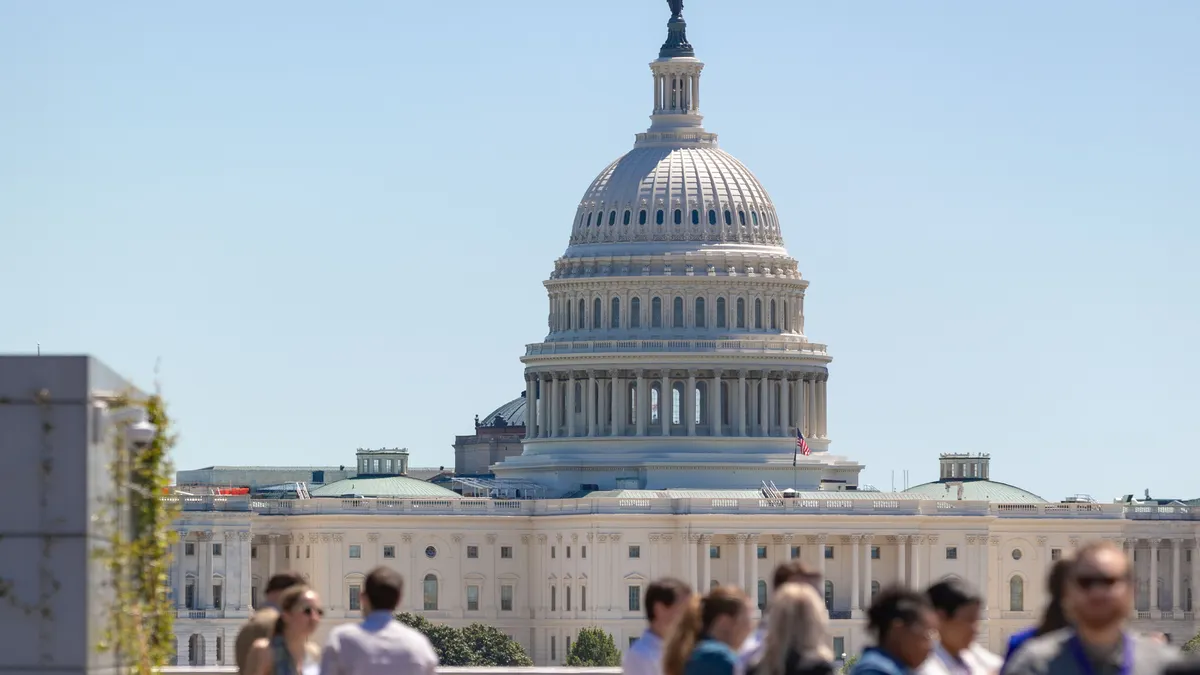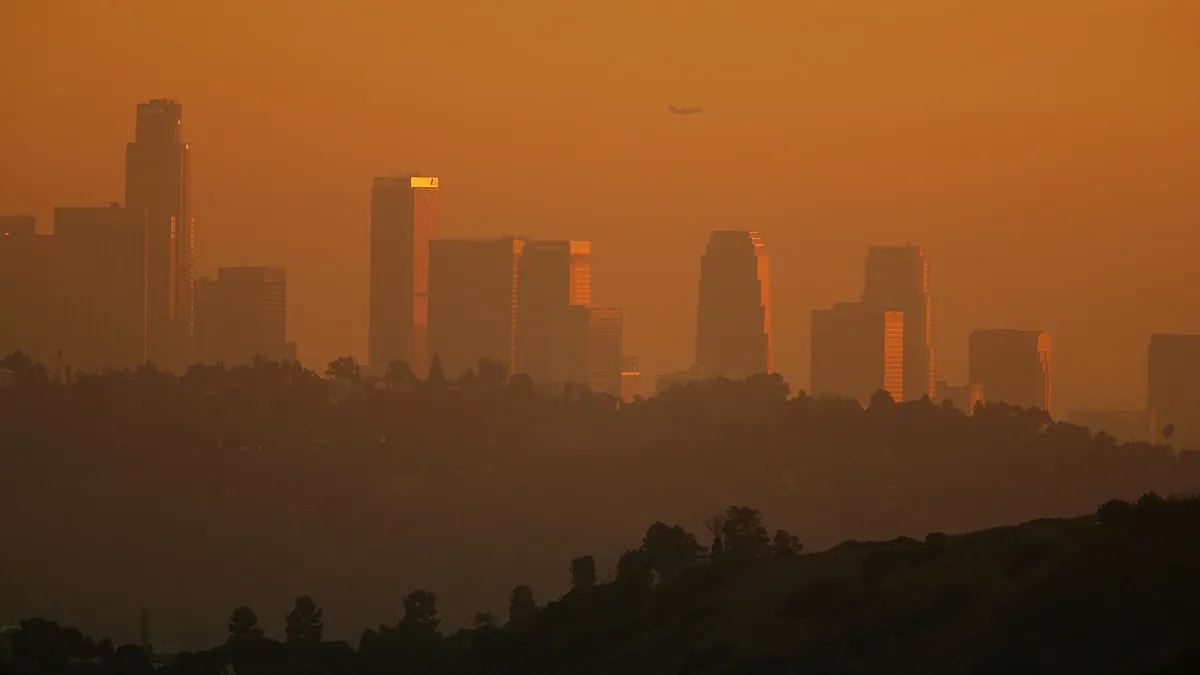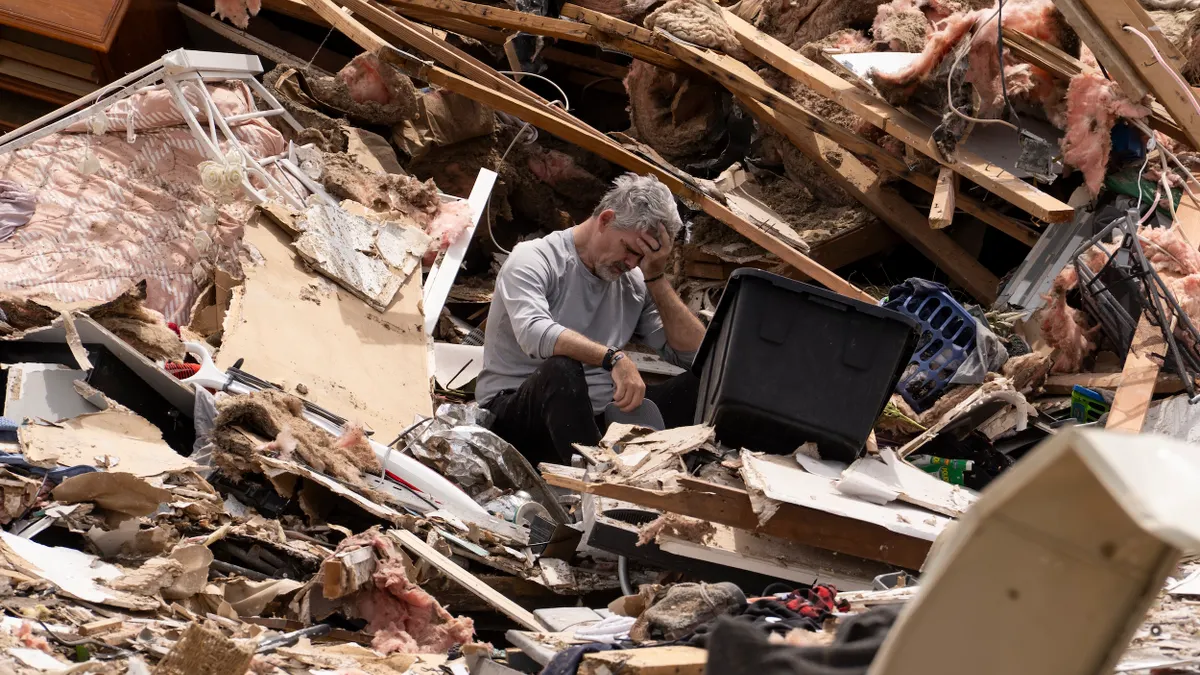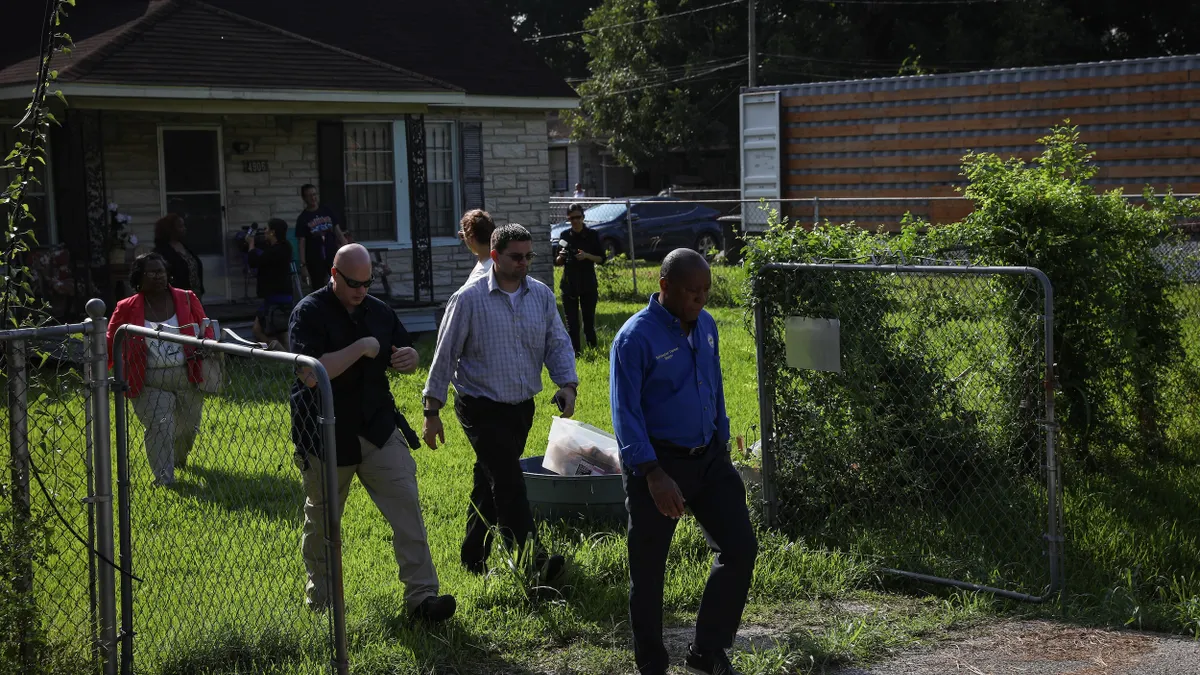Detroit community organizations are “activating” the city’s alleys, turning the often overgrown, underused strips of land into public art and gathering spaces. As the efforts have gained steam, funding has flowed toward them, with the city announcing in July that it will direct $3 million in American Rescue Plan dollars to neighborhood “arts alleys.”
Alley activation has also allowed communities to take the lead in building climate resilience in neighborhoods that have been historically disinvested in, researchers and community members told Smart Cities Dive, as climate change brings more frequent, severe flooding and extreme heat.
“We're able to gain some bit of land sovereignty and water sovereignty to be able to ensure that we will no longer bear the brunt of climate issues,” said Andrew Buendia, a recent University of Michigan-Dearborn graduate who volunteered with community organizations working on Detroit alley activation.
These alleys were once used for trash collection and vehicle storage, but the city ceased maintaining them decades ago as it lost population and resources, said Paul Draus, a UM-Dearborn professor of sociology who has collaborated with organizations working on alley activation. Over the years, many of these alleys became neglected spaces associated with crime and illegal dumping.
The recent alley activation efforts can build local climate resilience by introducing features that better absorb stormwater and prevent flooding, such as rain barrels, rain gardens and intentional plantings, Draus said. Those efforts can transform the alleys into shade-providing community spaces that help offset the urban heat island effect and provide “locally accessible green spaces” in areas without high-quality parks, he said. Alleys can also be turned into sites for urban agriculture or composting.
Detroit isn’t the only city working to green its alleys. Draus points to efforts in Chicago, Denver, Seattle and Los Angeles as well. Each city’s alleys are unique, necessitating unique approaches, he said. In Los Angeles, for example, efforts have focused on adding plants and installing capital-intensive built infrastructure such as permeable pavement, Draus said. In Detroit, on the other hand, alleys have often have to be cleared because they are so overgrown.
Cities looking to activate alleys for climate resilience need to make high-quality data accessible to the public through a portal, said Jacob Napieralski, a geology professor at UM-Dearborn who has worked alongside Draus on Detroit alley activation. “It’s the same thing with tree canopy or blue space,” he said. “Map it, find out where you have gaps, find out how you can get that data pushed out to the public and to neighborhood organizations that are really eager to make change,” he said.
He described an app a UM-Dearborn student is developing that will aggregate Detroit’s data to allow users to click on an alley and learn “how hot, how green or how wet” it is. Another student is developing a virtual reality tool that allows residents to put on a VR headset and see what possible alley layouts exist.
Residents should lead alley activation efforts, Draus says. He advises cities to use their resources to amplify the work of local leaders who are already “pushing the envelope” in terms of what’s possible in these spaces.
Kim Theus, co-founder of the Canfield Consortium, a neighborhood organization working to tackle blight-related issues in Detroit’s East Canfield area, said it would make a lot of sense for the city to take an “integrated approach, where an organization like ours isn’t just working by ourselves.” She hopes alley activation efforts in Detroit can eventually have the same citywide coordination as recycling, where “it’s a collective effort by the city, but everyone does it.”
To improve a neighborhood’s climate resilience, alley activation needs to happen in tandem with other infrastructure improvement, said Rhonda Theus, Kim’s sister and co-founder of Canfield Consortium. While rain barrels in alleys can help mitigate flooding, for example, she doesn’t think neighborhoods will see serious results until the city makes “huge improvements” in its aging sewer infrastructure.
Local governments often make the mistake of “coming into spaces acting as if they have the solutions to everything or are more knowledgeable on how to fix the problems than the community itself,” said Buendia. He explained that someone who has never used an alley might suggest installing security cameras to reduce crime, but that’s not necessarily what the community wants.
“We have to make these spaces look as if they're being actively used, right?” Buendia said, suggesting local gardens and benches.
“What we need is maybe just solar-powered lamps that can light the way of these alleyways,” he said, “so it's not a dark, scary place anymore.”



